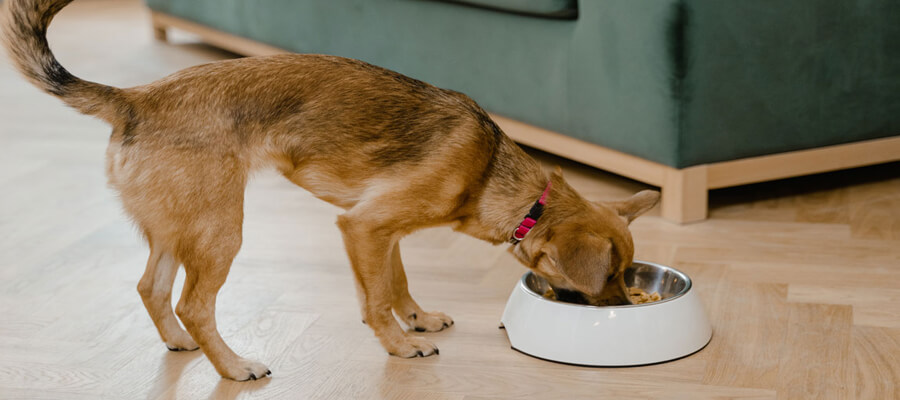
Updated on | by Critter Nets - Blogs
Why Is My Dog Guarding Food How to Solve Resource Guarding
Why Is My Dog Guarding Food Understanding and Solving Resource Guarding Behavior
Introduction
Resource guarding, especially regarding food, is a common behavior in dogs. While it can be instinctual, it can also lead to problematic situations for both the dog and their human companions. Understanding why your dog guards their food and learning how to manage this behavior can create a safer and more harmonious environment for everyone involved. In this article, we will explore the reasons behind food guarding and provide effective strategies to help resolve this issue.
What Is Resource Guarding
Resource guarding is a protective behavior where a dog perceives a specific item, such as food, toys, or even people, as valuable and may react defensively when someone approaches or tries to take it away. This behavior can manifest in various ways, including growling, snapping, or even biting.
Essentials for Your Newly Adopted Pet
Welcoming a shelter pet into your life is a beautiful journey. Here are some handpicked items to help your new friend feel safe, loved, and right at home:
Why Do Dogs Guard Food
Understanding the reasons behind resource guarding is crucial for addressing the behavior effectively. Here are some common reasons:
- Instinctual Behavior: Dogs are descended from wild ancestors who had to protect their food from other animals. This instinct can carry over to domesticated dogs, causing them to guard their resources.
- Previous Experiences: Dogs that have experienced food scarcity or competition for food may develop guarding behaviors. If a dog has had to fight for food in the past, they might be more likely to guard their meals.
- Fear or Anxiety: A fearful dog may guard food as a way to control their environment. They might feel threatened by the presence of other pets or people and resort to guarding to protect their resources.
- Learned Behavior: If a dog has learned that growling or snapping effectively keeps others away from their food, they may continue this behavior to maintain control over their resources.
Signs of Resource Guarding
Recognizing the signs of food guarding is essential for addressing the behavior. Common signs include:
- Growling: A clear warning sign that the dog is not comfortable with someone approaching their food.
- Baring Teeth: This can be an aggressive display meant to deter others from coming close.
- Stiff Body Language: A tense posture can indicate a dog is on high alert about their resources.
- Snapping or Biting: In extreme cases, a dog may bite if they feel their food is threatened.
- Eating Quickly: Some dogs may scarf down their food rapidly to avoid the chance of someone taking it away.
How to Solve Resource Guarding
Addressing resource guarding requires patience, understanding, and a structured approach. Here are effective strategies:
1. Assess the Situation
Start by observing your dog's behavior around food. Note the specific triggers that cause guarding behavior, such as the presence of other pets or people.
2. Avoid Confrontation
Never punish your dog for guarding behavior, as this can escalate fear and anxiety. Instead, focus on positive reinforcement techniques.
3. Create a Safe Eating Environment
- Feed in a Quiet Space: Ensure your dog has a calm, quiet area to eat where they feel secure and undisturbed.
- Use a Crate or Separate Room: If necessary, crate your dog or place them in a separate room during mealtime to prevent interference from other pets or people.
4. Use Positive Reinforcement
Teach your dog to associate positive experiences with your presence during mealtime.
- Start Slow: Begin by standing at a distance while your dog eats. Gradually move closer over time.
- Reward Calm Behavior: Give treats or praise when your dog remains calm and relaxed while you are nearby.
5. Practice “Trade” Exercises
Teach your dog that giving up their food leads to something even better:
- Introduce the “Trade” Game: Start with low-value treats. Offer a treat while your dog is eating, and when they willingly give up their food or back away, reward them with the better treat.
- Increase Value Gradually: Over time, use higher-value items to reinforce the idea that giving up their food results in something more desirable.
6. Desensitization Techniques
Gradually desensitize your dog to your presence near their food.
- Practice Handling Food: While your dog is eating, gently toss a treat into their bowl. This helps them learn that your approach is safe and rewarding.
- Increase Proximity Slowly: As your dog becomes more comfortable, slowly move closer while they eat, rewarding them for remaining calm.
7. Seek Professional Help if Needed
If your dog's guarding behavior is severe or if you're uncomfortable managing it on your own, consider consulting a professional dog trainer or a veterinary behaviorist. They can provide personalized strategies and support for your situation.
Conclusion
Resource guarding, particularly around food, is a behavior that many dog owners may encounter. Understanding the reasons behind this behavior and employing effective strategies can help create a more peaceful and safe environment for you and your dog. Remember, patience and consistency are key. With the right approach, you can help your dog feel more secure and reduce guarding behaviors, leading to a happier, more balanced pet.
Affiliate Products
We may earn a small commission when you shop through our links — it helps us keep sharing love and care for every dog out there, at no extra cost to you.

